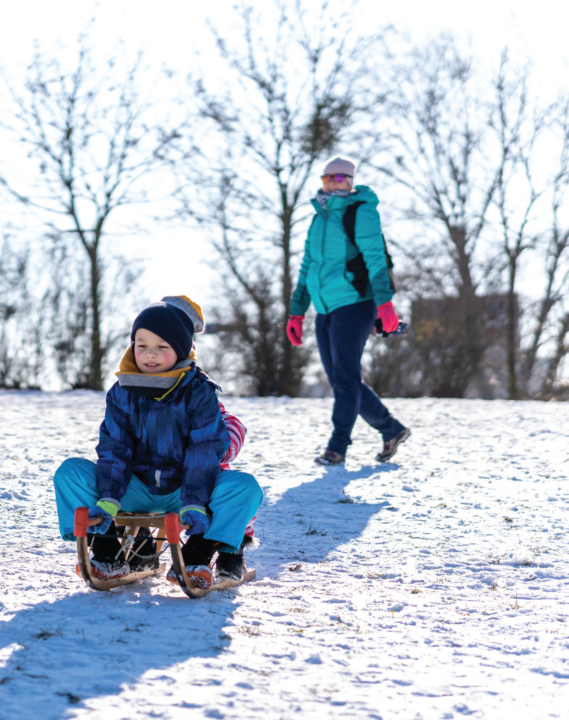Sledding dates back to the late 1800s in America, so there is a long history and love for this sport ingrained in our country from generation to generation. It’s enthusiastic, self-driven fun the entire family can enjoy around the neighborhood – should the landscape permit – or by taking a quick trip to the nearest winter-theme park.
Although sledding is thrilling, it can also be problematic. What has held true through the years is a deep concern for sled safety. Although ranked behind skiing, snowboarding and ice skating, sledding accidents cause tens of thousands of kids to be seen in the emergency room on an annual basis. Some of the most common sled injuries include: fractures, strains and sprains – primarily to the head, shoulders and knees.
“People have ended up in the (Intensive Care Unit), had to have a breathing tube from striking their head,” UC physician Dr. Woods Curry told Channel 9, WCPO in 2016. “That’s why it’s incredibly important to protect your head.”
Collisions are the lead culprit! The speed in which you obtain by sledding is a risk factor for colliding into other people and objects in the surrounding environment that may cause concussions or other head trauma. In a study conducted at the Center for Injury Research and Policy at Nationwide Children’s Hospital in Columbus, Ohio, they uncovered in nearly a decade of research that more than 220,000 patients were seen in the emergency room from 2008 to 2017 as a result of sledding. Children were seven times more likely to be the patient as compared to adults, 63 percent of all patients were injured as a result of a collision and 82 percent of the children seen in the hospital were specifically treated for head trauma.
What are the necessary precautions this winter? How do we indulge in the excitement of sled season while maintaining the highest level of safety for our children and for ourselves? Here is what parents should keep in mind before bundling up the family and heading out the door:
WEAR THE RIGHT GEAR – Helmets, shoulder pads and knee pads are protective equipment that reduce the possibility of injury altogether. Remember to dress for the weather. A winter jacket, hat, gloves, snow pants and snow boots are appropriate to combat the elements – especially the cold air when picking up speed down a hill.
CHECK YOUR ENVIRONMENT FIRST – Whether at home or at a theme park, be sure that there is nothing obstructing the sled course or that there are dangerous objects in line for potential collision. The pathway of sledding should never end in the street, a parking lot, or near large bodies of “frozen” water.
FOLLOW BEST PRACTICES – Seat your children, and yourself, feet first on the sled. Sled during good daylight hours. Choose sleds that have steering and braking features. Teach your children how to eject themselves from a sled by rolling over if going too fast. Each practice prevents an accident.
Sledding is an American tradition. Families bond over fun interactive activities which provide lifelong memories. Above all, the goal is to protect our loved ones in the midst of creating these unforgettable moments. Have fun and be safe out there!





